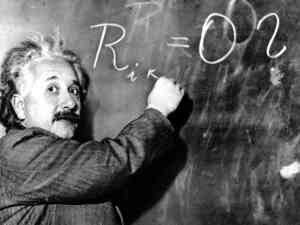AMDG
 We live in an exciting golden-age of science, particularly in astronomy. With the Hubble Telescope or the Voyager Spacecraft which is leaving our solar system ( the first man made objects to do so) or even the Kepler Space Observatory spotting extra-solar planets. As we can see further and further our greatest scientists have been asking why does the universe appear to be “fine-tuned” for life? The fact that we are here, able to observe and ask these questions, learn about laws of the universe, depends on the conditions for life to be present. At the relatively ‘smaller’ level of our solar system – our planet is in the ‘Goldilocks Zone’ – i.e. not too hot or cold for water and therefore life to exist. At larger galaxy / universe level, there are supposedly 6 dimensionless constants (i.e. subatomic forces, how gravity interacts with different forces) that if they were slightly different would not permit life to exist anywhere in the universe.
We live in an exciting golden-age of science, particularly in astronomy. With the Hubble Telescope or the Voyager Spacecraft which is leaving our solar system ( the first man made objects to do so) or even the Kepler Space Observatory spotting extra-solar planets. As we can see further and further our greatest scientists have been asking why does the universe appear to be “fine-tuned” for life? The fact that we are here, able to observe and ask these questions, learn about laws of the universe, depends on the conditions for life to be present. At the relatively ‘smaller’ level of our solar system – our planet is in the ‘Goldilocks Zone’ – i.e. not too hot or cold for water and therefore life to exist. At larger galaxy / universe level, there are supposedly 6 dimensionless constants (i.e. subatomic forces, how gravity interacts with different forces) that if they were slightly different would not permit life to exist anywhere in the universe.
Einstein’s equivalence principle, which states that the laws of physics are the same everywhere has just been brought into question due to research in Chile. Analysis of the light from distant quasars in 2011 from data from the Very Large Telescope (VLT) in Chile showed that one of the constants of nature appears to be different in different parts of the cosmos, supporting the theory that our solar system is in an area of the Universe that is “just right” for life,.”This finding was a real surprise to everyone,” said John Webb of the University of New South Wales in Sydney, Australia. “The implications for our current understanding of science are profound. If the laws of physics turn out to be merely “local by-laws”, it might be that whilst our observable part of the Universe favors the existence of life and human beings, other far more distant regions may exist where different laws preclude the formation of life, at least as we know it.
 These exciting discoveries seem can give strength to a recent addition to the classical formulations of the arguments for the existence of God. The argument from intelligibility is one that Pope Benedict is largely responsible for. As a young theologian the then Joseph Ratzinger commences with the observation that finite being, as we experience it, is marked, through and through, by intelligibility, that it is to say, by a formal structure that makes it understandable to an inquiring mind. In point of fact, all of the sciences – physics, chemistry, psychology, astronomy, biology, and so forth – rest on the assumption that at all levels, microscopic and macroscopic, being can be known. Ratzinger argues that the only finally satisfying explanation for this universal objective intelligibility is a great Intelligence who has thought the universe into being. Our language provides an intriguing clue in this regard, for we speak of our acts of knowledge as moments of “recognition,” literally a re-cognition, a thinking again what has already been thought. Ratzinger cites Einstein in support of this connection: “in the laws of nature, a mind so superior is revealed that in comparison, our minds are as something worthless.” In this Golden age of Astronomy and discovery of space – could it be that growing proof of a more finely tuned universe than we originally imagined – gives strength to the argument from intelligibility?
These exciting discoveries seem can give strength to a recent addition to the classical formulations of the arguments for the existence of God. The argument from intelligibility is one that Pope Benedict is largely responsible for. As a young theologian the then Joseph Ratzinger commences with the observation that finite being, as we experience it, is marked, through and through, by intelligibility, that it is to say, by a formal structure that makes it understandable to an inquiring mind. In point of fact, all of the sciences – physics, chemistry, psychology, astronomy, biology, and so forth – rest on the assumption that at all levels, microscopic and macroscopic, being can be known. Ratzinger argues that the only finally satisfying explanation for this universal objective intelligibility is a great Intelligence who has thought the universe into being. Our language provides an intriguing clue in this regard, for we speak of our acts of knowledge as moments of “recognition,” literally a re-cognition, a thinking again what has already been thought. Ratzinger cites Einstein in support of this connection: “in the laws of nature, a mind so superior is revealed that in comparison, our minds are as something worthless.” In this Golden age of Astronomy and discovery of space – could it be that growing proof of a more finely tuned universe than we originally imagined – gives strength to the argument from intelligibility?






